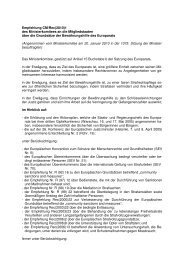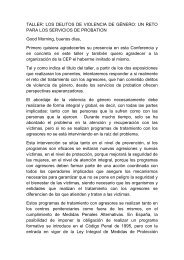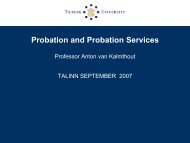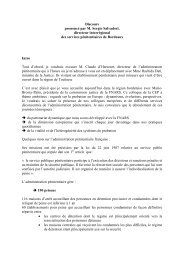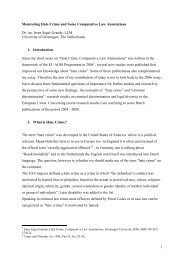Offender Management Community Scoping of London Gang ...
Offender Management Community Scoping of London Gang ...
Offender Management Community Scoping of London Gang ...
Create successful ePaper yourself
Turn your PDF publications into a flip-book with our unique Google optimized e-Paper software.
the term „gang‟ by police or the media made the gang label and lifestyle more<br />
appealing to gang „wannabes‟ leading them to emulate the „gangsta‟ lifestyle<br />
(Young et al, 2007, 160). Claire Alexander (2008) has argued that the use <strong>of</strong> the<br />
„the gang‟ in intervention strategies may, as has occurred in the US, create the<br />
conditions that have promoted gang cohesion. She argues that to label groups<br />
<strong>of</strong> young people as 'gangs' runs the risk <strong>of</strong> attributing coherence to transitional<br />
and fluid groups.<br />
The question <strong>of</strong> whether the word 'gang' is useful at all in addressing youth<br />
crime has been addressed by several authors (Alexander, 2008; Brand &<br />
Ollerearnshaw, 2008; Hallsworth & Young, 2008; Howell, 2007; Marshall, Webb,<br />
& Tilley, 2005) who have argued that the focus should not be on „the gang‟ but<br />
on problematic behaviour, in other words, the „prolific <strong>of</strong>fending <strong>of</strong> various types<br />
and seriousness amongst associated networks <strong>of</strong> individuals‟ (Marshall, Webb,<br />
& Tilley, 2005,7). Hallsworth and Young‟s work has been important in<br />
distinguishing gangs from organised criminal groups and peer groups. As<br />
Marshall, Webb and Tilley have commented: “Certainly not all groups <strong>of</strong> young<br />
people are violent, gun carrying drug dealers”. The value <strong>of</strong> Hallsworth and<br />
Young‟s work is the specification <strong>of</strong> the relationship between the gang, crime<br />
and violence:<br />
„The gang we define as a relatively durable, predominantly street-based<br />
group <strong>of</strong> young people who see themselves (and are recognised by<br />
others) as a discernible group for whom crime and violence is intrinsic to<br />
identity and practice. The minimal characteristic features <strong>of</strong> the gang<br />
then are that it has a) a name, b) a propensity to inflict violence and<br />
engage in crime where c) violence and delinquency performs a functional<br />
role in promoting group identity and solidarity‟ (Hallsworth & Young,<br />
2006,68)<br />
The self-identity and violence associated with this definition <strong>of</strong> gang is<br />
significant since as the recent report by Young et al for the Youth Justice Board<br />
indicates, much youth crime has always been carried out in groups. However,<br />
the authors argue, such groups may not consider themselves to be „gangs‟<br />
(Young et al., 2007). All groups <strong>of</strong> young people are therefore not necessarily<br />
<strong>of</strong>fenders and all those who <strong>of</strong>fend in groups are not necessarily members <strong>of</strong><br />
durable gangs. Young et al coin the term „serious group <strong>of</strong>fending‟. The authors<br />
argue that group related activities amongst adolescents are usefully thought <strong>of</strong><br />
in terms <strong>of</strong> a continuum from those that are purely social to those linked to<br />
serious and premeditated <strong>of</strong>fending. All such group based activities - including<br />
serious <strong>of</strong>fending - have, it is argued, a strong social underpinning:<br />
„The group is likely to exist primarily as a social entity but its members and in<br />
particular, the dynamics between them strongly influence whether the norms<br />
which prevail within the group tend to be pro or anti-social‟ (Young et al, 2007,<br />
162)<br />
9


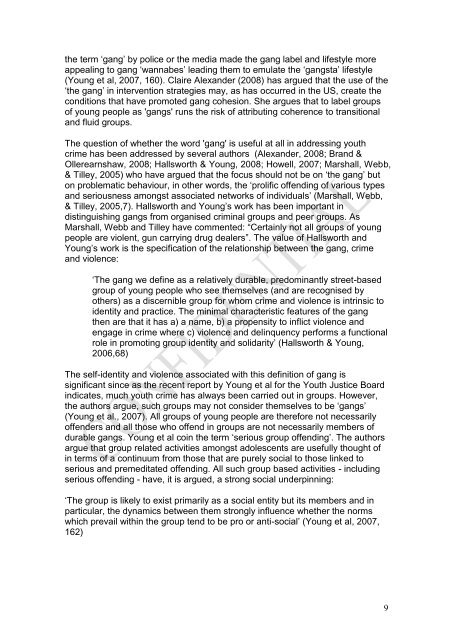

![AGIS2 Nov 08 Conference Report_[Version 2] - CEP, the European ...](https://img.yumpu.com/50764570/1/190x245/agis2-nov-08-conference-report-version-2-cep-the-european-.jpg?quality=85)
